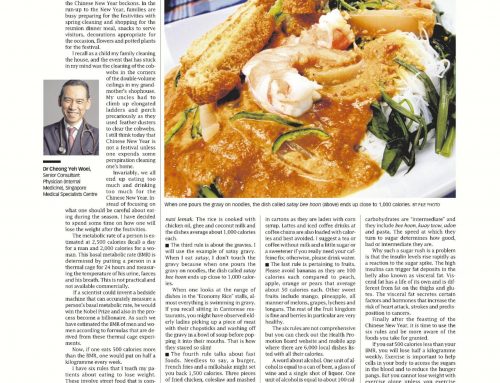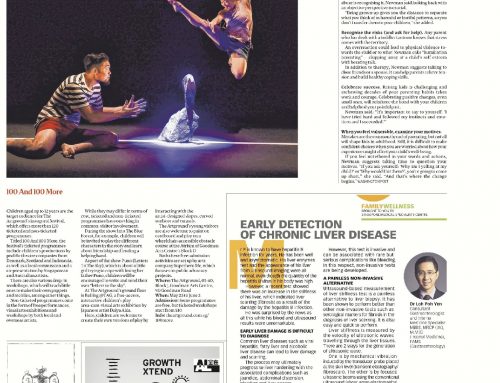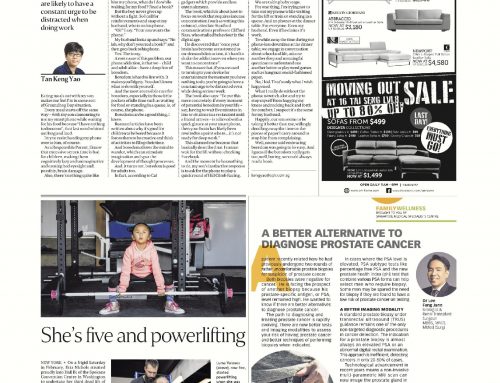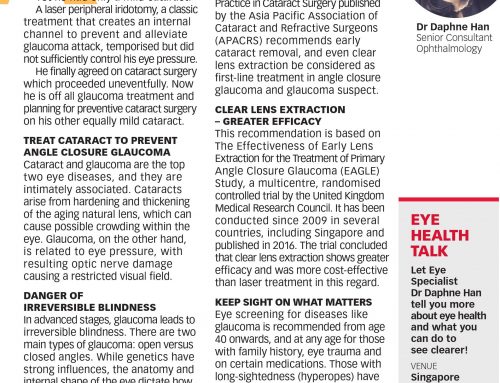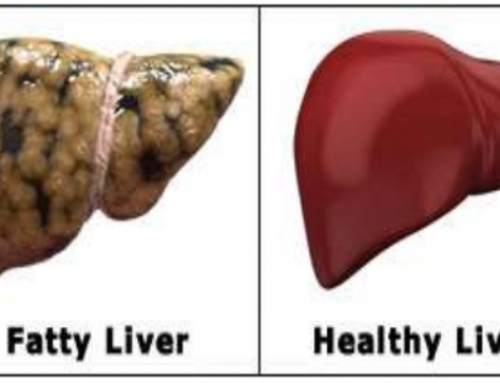Publication: The Business Times 22/01/2011
Protect the lining in your arteries by watching your diet, exercising consistently and reducing stress. By Chong Yeh Woei
ONE of the biggest challenges that we face as an aging urban society is the advent of chronic diseases. I saw Mr C the other day and he’s your middle-aged, overweight patient with a history of high blood pressure, diabetes and raised cholesterols. He works for a global firm and travels extensively throughout the year. He smokes, drinks and eats too much at business dinners; and hardly exercised in the last 10 years. He had balloon angioplasty two years ago and came in to see me for his usual medications. Does that sound familiar?
They could be people you know, work with or are related to. What you may have noticed is that these people have a lot of lifestyle habits in common, they may overindulge in food, alcohol, smoke and have little or no exercise. What you may have also noticed is that these people who have one or more of these chronic diseases have at some time eventually succumbed to a heart attack, stroke, undergone a heart bypass or had a balloon angioplasty with insertion of one or more stents.
There seems to be quite a lot of commonality in their lifestyles associated with chronic diseases and the poor outcomes that follow.
There is actually a common thread that follows through and that is found in our blood vessels. We have an estimated 100,000 kilometres of blood vessels in our body and there is a lining in our arteries that we call the endothelium. We used to think that the lining was just that, a lining made of cells, but the molecular advances in the last decade have taught us that there is a lot of molecular activity going on at the lining.
If you could unfold this lining, it could extend to tens of thousands of square kilometres. In other words, the lining is probably the biggest organ in your body, larger than the surface area of your skin.
Now, I would like to take you back to 1948 to a town called Framingham in Massachusetts where they started a study bearing the name of the town. That study showed us that the risk factors for heart disease are as follows: being male, overweight, diabetic, hypertensive, gouty, smoking, high cholesterols and having a family member with a heart attack. These are the eight risk factors and there is a ninth risk factor in today’s context and that is stress. All these nine factors would attack the lining in different ways.
The lining would become inflamed and this would give rise to the growth of plaques that cause blockages. Somewhere down the line, the plaque might crack open or rupture and that would trigger a clot that would block the vessel causing a stroke or a heart attack. In other words, the nine risk factors are like roads leading to Rome and the lining or endothelium is Rome itself.
There is a final common pathway for all these chronic diseases and risk factors to converge on and that final destination is the lining. It is at the lining that all the damage is done, caused by raised blood pressure, tar products from the cigarettes, raised sugars and insulin in diabetes. And if you have a family history of heart attacks, you might inherit a lining that is already fragile.
But, what about people you know who’ve abused their health all their lives and lived to a ripe old age? These people might have had a tough lining that was resilient.
Prevention
Hence the real advice we can give you as a doctor is to defend your lining. Defend it at all costs – control your chronic diseases well, watch what you eat, exercise consistently and reduce the amount of stress in your lives. Defending your lining means that you are trying to prevent events such as stroke or heart attack from derailing your quality of life.
In Singapore today, we would be expected to live to 78 years for men and 84 years for women on the average. I see this as longevity and I would wish for the best quality of life for as long as possible before a quick exit at the end. I do not wish to have a premature event such as a stroke or heart attack in my 50s or 60s where I could be bedridden or be a cardiac cripple for a period of 10 years or more.
Therefore, we have to take our health seriously and having attained a decent standard of living, we need for those who do not have chronic diseases, to take preventive action. For those who already have chronic diseases, they should make the effort to control their disease well.
We can also measure the inflammation of the lining today with a blood test called highly sensitive C reactive protein; this can reflect to some extent how inflamed your lining is.
A raised C reactive protein may indicate an increased chance of stroke, heart attacks, sudden death and the need for balloon angioplasty. Taking a cholesterol pill would also help with the inflammation of the lining. There is evidence that these cholesterol pills do more than just lower your cholesterols – they help reduce the C reactive protein and therefore the inflammation of the lining. They may also slow down the growth of plaques and prevent the disastrous rupture of such plaques.
So, please see your doctor and get him to take a good look at your lifestyle, see how you can modify it; diagnose and treat any chronic disease that you may harbour in your body. We have all worked so hard to get to a certain place in life and should spare no effort to make sure we can continue to enjoy it with our friends, family and loved ones for as long as we can.

